Artist Spotlight | Woodworking in Craft Beer
During this craft beer boom, the industry has provided so much more than just a new and exciting wave of beer styles, techniques and breweries. It has also created an outlet and newfound respect for the arts. Artists all over the country have found support and work from breweries looking for anything from taproom murals to label art to small batch glassware and other merch. Many breweries have even involved the arts at their events as a continued means of support. In fact, this was a huge focus of The Eighth State Brewing’s Altered States Festival in Greenville, SC. One field of artistry in particular that has really popularized itself in the craft beer community recently has been woodworking.
An admirable and notably difficult trade, woodworkers make up a relatively small group of the artistic community, and for that reason have found themselves in particularly high demand for a variety of different projects. This intermittent series hopes to highlight some of the trades and specific individuals who deserve to have their work seen and supported, as they pull their love and passion for beer into the creations for which they’ve become so well-known.
Woodworking & Beer
Display Boxes
There may be some thinking of where this niche skill has found demand in the industry, and the answer may be surprising. In the more mainstream market one area where woodworkers have seen their work more regularly displayed is as a vessel for some of the more rare and exclusive bottles released by different breweries. Breweries such as Goose Island, Side Project, Anchorage, Parish, The Veil and others have had releases in the past featuring a uniquely crafted wooden box as a means to hold and display their more sought-after or limited offerings.
Lambic Cradles
Another popular option that consumers have increased demand for with a resurgence of popularity for traditional Old World styles of beer are custom wooden Lambic cradles. Designed to be used for pouring beers cellared horizontally as not to disturb settled yeast on the side of the bottle, these cradles have not only been released in limited batches by breweries who specialize in wild, funky, cellar-able beers, but they are also popular on internet marketplaces such as Etsy.
Custom Openers
All that being said, arguably the most popular wooden gem in craft beer right now are custom openers. With nearly endless possibilities in design, materials and execution, custom bottle openers have seen a huge rise in demand over the last few years. In any competitive market like this, there are always certain artists or studios that begin to rise to the top. Many have seen the work of Adam Hicks, who not only currently collaborates with Glass to Mouth on printed opener runs, but grew to popularity with his beautiful wooden customs featuring famous box lids, Kaotic panels and other unique resin designs. He still does giveaways for his wooden and resin openers, but a quick trigger finger is an absolute must to get a shot at one.
We had the privilege to talk with two artists in particular whose studios have become hugely popular, with the support of a quickly growing fanbase and immense promise for continued success in the industry.
3BranchStudio
Roots
Tim is the owner and founder of 3BranchStudio out of Chicago. Founded in 2017, 3BranchStudio is a passion project and the culmination of countless hours spent woodworking with his grandfather since grade school. Simply advertised as a “Lover of Beer Things & A Maker of Wood Things”, Tim progressed from cutting boards, clocks and furniture to specializing in custom beer bottle openers that utilize a variety of unique materials.
Openers
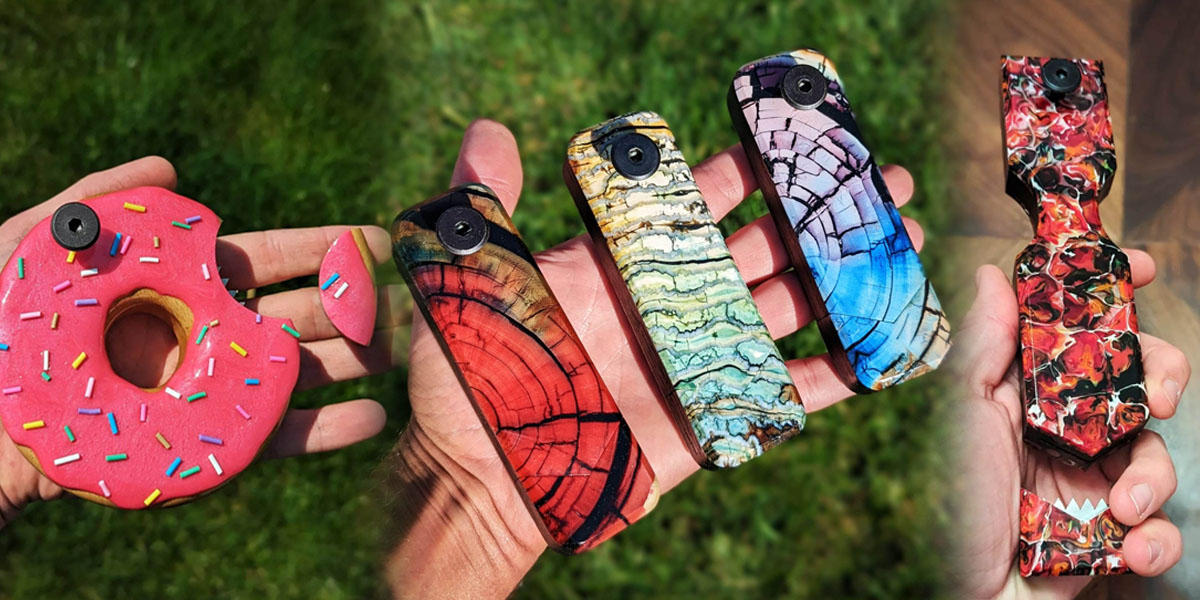
3Branch openers are truly one-of-a-kind projects, and Tim works with anything from resins to exotic and rare woods, and even fossils such as mammoth molar. Additionally, he always looks to support other artists across the country by utilizing their handmade materials in their pieces as well. Kaotic Artworks is also one of many different artists that 3Branch supports.
These woodworkers who specialize in openers also like to have a ‘signature’ component; something that consistently differentiates their work from anyone else. For 3Branch, Tim’s openers utilize a concealed wax cutter device, and in the past he has even done openers with embedded corkscrews. His work has even featured handmade switchblade mechanisms accompanying countless unique and interesting shapes. While the embedded mechanisms are all unique to 3BranchStudio, Tim is the sole designer and maker of each piece as well, so he is able to ensure that no two openers are exactly alike.
Influenced By Beer
In an effort to both elevate his skills and creativity as a woodworking artist and feed his growing passion for craft beer, Tim felt he could apply what he had learned in order to create what he called a “better mousetrap.” Once his unique design was created, it just came down to focusing on continually improving the process to create high-quality products.
The boom in the industry over the last six years has been huge for 3Branch’s success. A whirlwind to say the least, Tim told us that the reception for his work has blown him away, and the demand for his work has been incredibly humbling. The good fortune he has experienced has been paid forward through his work with charitable outlets within and beyond the craft beer community, and his openers, cutting boards and knives have raised tens of thousands of dollars for various charitable causes. In addition to these outlets, another goal for the future is to hopefully re-open an extensive and continually growing waitlist for his beautiful work.
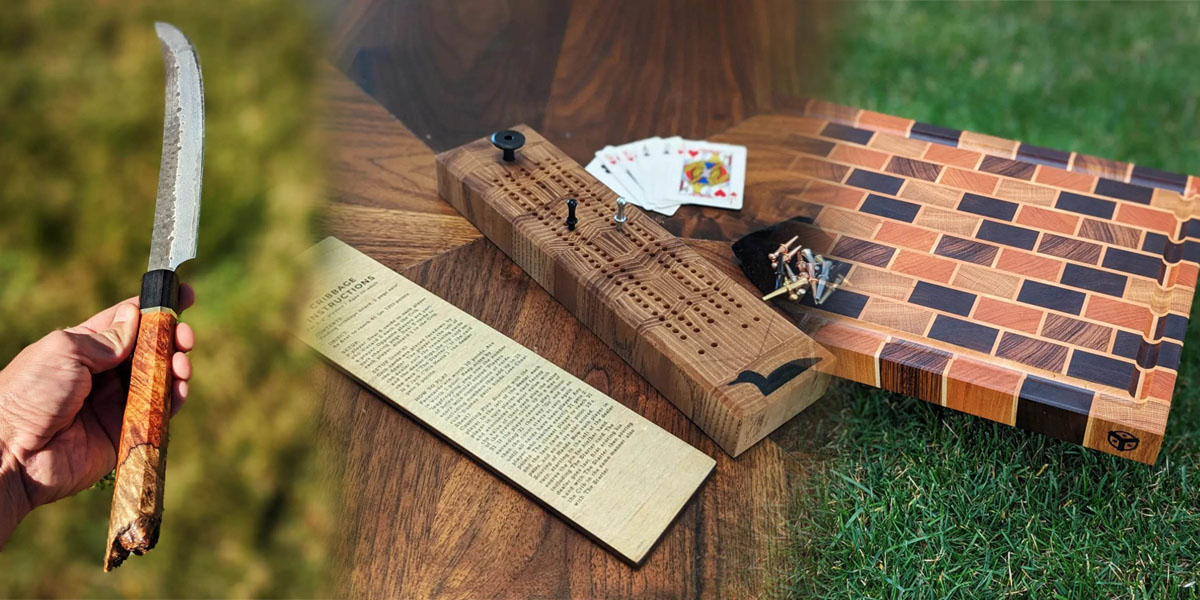
Where to Look
While much of his business comes through word of mouth or events where pieces have been donated, 3BranchStudio operates primarily through Instagram and Facebook. Giveaways for custom openers can frequently be found on these platforms. That said, there is always the possibility of seeing his work collaboratively within the craft beer community as well.
What Lies Ahead

3BranchStudio started with the humble goal of getting anyone a custom bottle opener who wanted one. And this is a goal he plans to fulfill. He doesn’t seek any recognition for his work and is completely humbled by the response to his creations. The Craft Beer Community is a small collection of truly amazing people, and Tim has absolutely been a testament to this.
3BranchStudio continues to grow and explore more unique materials, designs and media. Tim stated that he credits the ability to do this largely to his wife, who supports and provides opportunity for countless hours in the shop. He also garners inspiration and support every day from his three young children. The future undoubtedly looks bright for Tim and 3Branch; with a creative eye and passion put into everything he does, you can rest assured there will be many eyes looking to see what comes next from this small Chicago studio.
Søren
Roots
Søren Cradles is a small woodworking operation started in 2020 by Kyle Handrich and Mark Juel that specializes in handmade wooden Lambic cradles constructed in modernized designs. At the time, Mark was involved in Lambic-style beer prior to Søren but didn’t have the woodworking abilities. Kyle, on the other hand, while into craft beer, was more seasoned in woodworking but less familiar with Lambic. Through the joining of forces post graduate studies, the idea sparked to create a unique design for the traditional Lambic basket, with a focus in durability. Together the two created the final design based on structural sketches created by Mark and original prototypes built by Kyle.
Originally there was an avoidance toward any type of advertising or excessive self-promotion since running a business wasn’t the ultimate goal. However, all it took was showing a cradle to a group of friends at a bottle share for everything to change. Before they knew it, Kyle and Mark were selling cradles to Lambic fans worldwide.
The name of the brand itself is a nod to 19th Century Danish philosopher Søren Kierkegaard, an impactful figure and inspiration to Kyle’s own thinking and professional practice of counseling. He liked the idea of a brand having hidden personal meaning and the reflection it offers. Additionally, the name Søren was conveniently fitting for the heavy Scandinavian influence in the cradle’s design.
Cradles

When talking with Kyle, he was humble in the credit he gave himself as an artist for his woodworking; his skills and passion speak for themselves with his portfolio of work. His craft is a specialization that circulates around an appreciation for design—finding ways to limit the compromise between function and aesthetic. This is where he says his creativity finds a real outlet, through navigating the challenge in finding balance rather than compromise. Additionally, the decision to choose to keep elements in tension is also a form of balance. While using rich woods and oil finishes can certainly lend to uniqueness, Kyle is a firm believer in form being what lends the most to overall aesthetic.
As a segue to this, we were curious on Kyle’s thoughts and opinions on favorite woodworking materials from past projects. While he noted that everything is subjective, Leopardwood and Zebrawood cradles were some of their fastest sellers despite a significant difference in price from their previous offerings. In general, many of Kyle’s designs sport a walnut frame with maple inlay, as the sleek combo and affordable price point make it a great all-around option. While the pricing on Søren cradles is a bit higher than what can be found from the more mass-produced wicker Lambic baskets online, Mark and Kyle both feel that the price is representative of the materials, craftsmanship and design/development processes it takes to produce each one.
Room to Grow?

When asked about any possible expansion beyond strictly cradles, Kyle explained that while there has been limited experimentation with coffee and side tables in the past, it is still a work in progress as he continues to learn more about Japanese joinery. Being such an important part of his cradle construction as well as so many other types of wooden products, Kyle has found himself continuing to learn as much as he can about the structural elements of certain joinery and how to execute that knowledge in practice. Japanese woodworking in particular has been a focus, and while difficult and often frustrating to learn new tools associated with it, he noted that he feels Japanese woodworking is really the epitome of form and function.
Influenced By Beer
According to Mark, it’s safe to say that without the craft beer boom over the last few years, there would be no Søren. Even amongst craft beer drinkers, the Lambic enthusiasts are an even smaller niche of extremely passionate fans. He made a point to state while he doesn’t support the secondary market values for beer, it’s worth considering that if you look at the prices that some people are willing to pay for a single rare bottle, it shows the lengths people are willing to go in this niche hobby of woodworking as well.
At this point, Søren has shipped cradles to 4 different continents and over a dozen countries. With the explosion of Lambic popularity in recent years, Mark stated that the rise in global interest made a lot of sense. That said, he noticed in general that since it seems a bit easier to track down traditional Lambic baskets in Europe, it has helped to expand the American market as it’s more difficult for enthusiasts stateside to have access to high quality Lambics or cradles for purchase.

Where to Look
Søren have conducted almost all of their sales via Instagram. When they started on the platform, they sold cradles through random “drops”, or unannounced releases where the first person to comment on the Instagram post would have the opportunity to purchase the cradle. Mark noted that for the first 6 months or so they didn’t have a single drop that took more than 5 seconds to sell out. While this was amazing and humbling, they initially weren’t able to keep up with the demand. Gradually, however, production increased and they switched over to selling through a web store. This made it easier for customers to buy a cradle of their choosing, as well as significantly streamline the process for payments, shipping and other associated steps.
There is also hope in the future for possible collaboration with breweries and brewpubs. While there had been early interest from a few American breweries regarding custom collabs, production just wasn’t quick enough to put any of those plans to fruition at the time. Brewpubs have also inquired about possibly constructing magnum cradles as well. Both collaborative opportunities are hopeful for the future but will require additional tweaks to production as well as redesign plans to accommodate the prospect of building such large cradles for the magnum-size bottles.
What Lies Ahead
According to Kyle and Mark, Søren has received more recognition than ever expected. The interactions they’ve had with patrons and the excitement and appreciation they’ve seen for their work has given the recognition that much more substance. It has really been humbling for the two friends. Kyle made an interesting point in saying that when looking at the future for Søren and just the arts in general in craft beer, the people heavily involved are able to communicate at a more artistic level because they care about the details to the point of seeking them out. This allows for continued growth and development of the arts within the scope of the Industry.
With Lambic producers and even a Michelin star restaurant having purchased cradles in the past, the response to Søren has been equally exciting and admirable. With this hyper-niche product continuing to gain traction and the positive response to their work flowing in constantly, it’s safe to say that the road ahead for the Søren side project is certainly going to be worth getting excited about.
A Bright Future
Exploring the arts in craft beer is always as rewarding as it is exciting. The amazing artist pool and talent that has emerged simply from a passion for beer is so great to see, and the realm of woodworking was the perfect place to start with this series. Søren and 3BranchStudio both have bright futures in the industry, and we can’t wait to see what else and who else is ready to step into the spotlight and tell their story.
On behalf of the whole team at PorchDrinking, we want to thank Tim, Kyle and Mark for being the first victims of the Artist Spotlight and for sharing their beautiful work and humbling experiences with our readers.


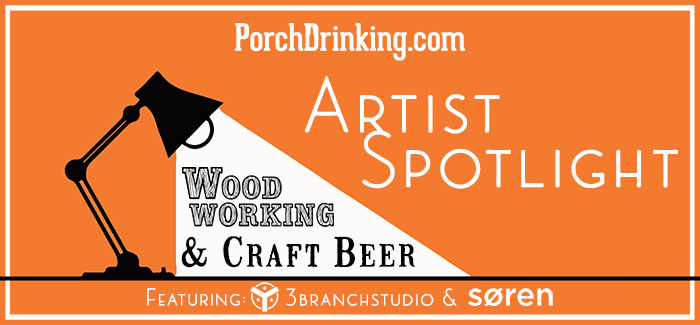


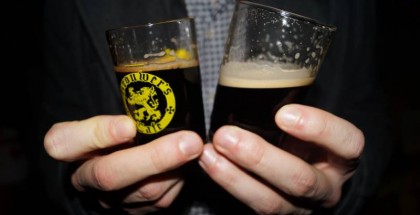
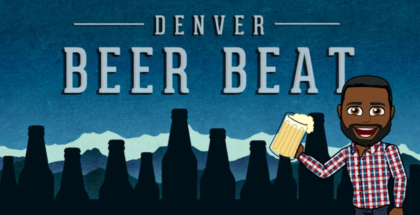

Submit a Comment